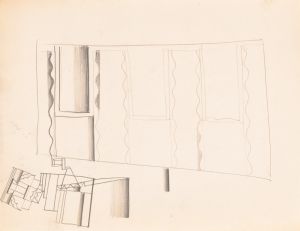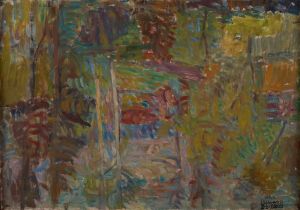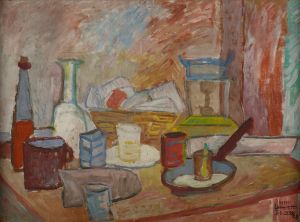
Composition
A hand-painted replica of Sasza Blonder’s masterpiece Composition, meticulously crafted by professional artists to capture the true essence of the original. Each piece is created with museum-quality canvas and rare mineral pigments, carefully painted by experienced artists with delicate brushstrokes and rich, layered colors to perfectly recreate the texture of the original artwork. Unlike machine-printed reproductions, this hand-painted version brings the painting to life, infused with the artist’s emotions and skill in every stroke. Whether for personal collection or home decoration, it instantly elevates the artistic atmosphere of any space.
Sasza Blonder, also known as Aleksander Blonder, was a Polish painter and a prominent figure in the avant-garde art movement in the early 20th century. Born in 1909 in Chortkiv, which was then part of the Austro-Hungarian Empire and is now in Ukraine, Blonder became an influential artist within the Polish art scene before World War II. He studied at the Academy of Fine Arts in Kraków and was associated with the Kraków Group, a collective of avant-garde artists who were active in the 1930s.
Blonder's work is characterized by its modernist approach, often incorporating elements of abstraction and cubism. His painting "Composition" is a notable example of his style, reflecting the influence of European modernism and the avant-garde movements of the time. The exact date of the painting is not specified, but it is believed to have been created during the 1930s, a period when Blonder was actively involved in the artistic community in Kraków.
"Composition" by Sasza Blonder exemplifies his interest in geometric forms and the abstraction of natural elements. The painting features a dynamic arrangement of shapes and colors, creating a sense of movement and depth. Blonder's use of bold lines and contrasting hues demonstrates his mastery of composition and his ability to convey emotion and energy through abstract forms.
Blonder's career was tragically cut short by the outbreak of World War II. As a Jewish artist, he faced persecution under the Nazi regime. In 1939, he fled to France, where he continued to work and exhibit his art. However, his life was marked by the hardships of war, and he ultimately joined the French Resistance. Sasza Blonder died in 1949 in Paris, leaving behind a legacy of innovative and influential artwork.
Today, Blonder's work is recognized for its contribution to the development of modern art in Poland and Europe. His paintings, including "Composition," are held in various collections and continue to be studied and appreciated for their artistic significance. Blonder's ability to blend elements of cubism, abstraction, and modernism into his work has cemented his place in the history of 20th-century art.
In summary, "Composition" by Sasza Blonder is a testament to the artist's skill and vision. It reflects the broader trends of the avant-garde movement and showcases Blonder's unique approach to form and color. Despite the challenges he faced during his lifetime, Blonder's work remains an important part of the modernist canon, offering insight into the artistic innovations of his era.


















